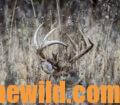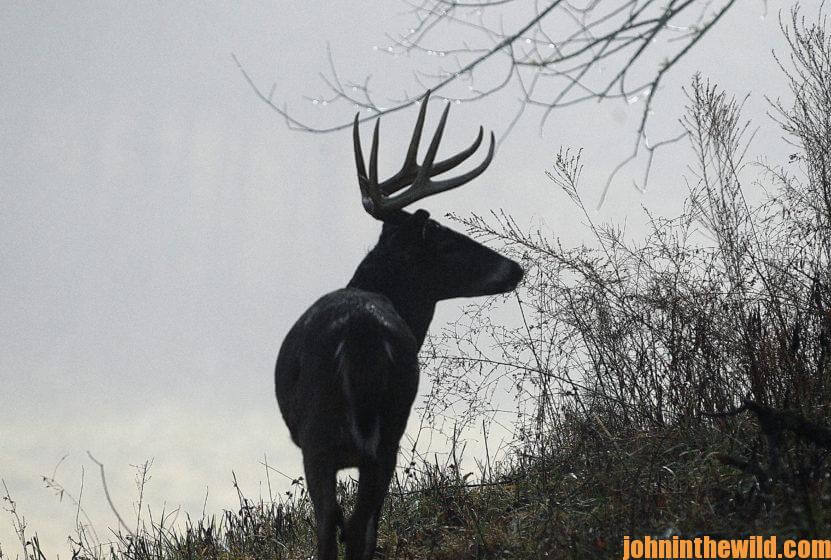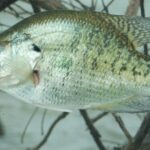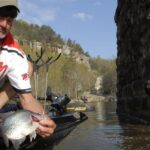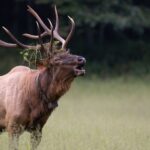Editor’s Note: Between the cover where deer bed down, and the places where they feed, trophy-racked bucks are on the move and vulnerable early in the morning and late in the afternoon.
The first glow of day was beginning to wipe away the black smoke of darkness as I sat shivering in my tree stand. The brown thrush, one of the first woodland creatures to awaken, labored through the leaves, trying to make a living – scratching out worms and grubs in the decaying foliage. A few squirrels bounded along the limbs and caused heavy dewdrops to fall that resembled miniature rain showers.
As the sun cautiously peeped over the horizon, I noticed an erratic movement 30-yards away. While sitting motionless, I saw the twitch again and recognized the white hair inside a deer’s ear. Since this deer was feeding behind a blackberry thicket, all I could see was that one ear. Within 15 minutes, the doe had fed around the thicket and was in plain view some 20-yards away. But she wasn’t the only deer I now could see. Two yearling bucks and three more does moved through the acorn field I was watching. Carefully I raised my rifle and scoped the deer. Any one of 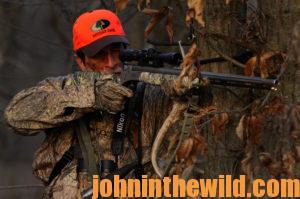 them would have been an easy shot, however, a trophy buck was my quarry. So, I let these deer pass .
them would have been an easy shot, however, a trophy buck was my quarry. So, I let these deer pass .
Another uneventful hour passed, and I wondered if my hunting companions had known what they were talking about when they’d said, “Deer usually pass through this bottom in the mornings after feeding on the soybeans all night long. Then at daylight they move out of the fields through this bottom and into their bedding sites a few hundred yards into the woods. Your best chance of taking a good buck should be in this bottom.”
Although I’d hoped to meet a trophy whitetail, by 9:00 am, all I’d seen were the two yearling bucks and the does. I was using a tree stand that morning that had a back rest and faced the tree. From time to time, I’d stand up and look around, but most of the time I sat in the stand. Suddenly from directly behind me, I heard a twig snap. I looked and spotted a head full of horns walking straight for my tree.
I immediately wondered, “Will the stand squeak when I stand up? Can I get up and turn before the deer sees or smells me? My scope is sighted-in for 100 yards. How will I aim if the buck is right under me?” These questions rapidly raced through my mind as I began to stand, turn and raise my rifle.
By then the buck was less than 30-yards away and still walking head down, straight for my tree. I looked for the buck in my 4X scope. At 20 yards, all I could find to aim at was the middle of the deer’s back between the two front shoulders. I touched the trigger, the gun exploded, and the buck dropped. Waiting in the stand, I bolted the rifle and sighted-in on the deer’s shoulder. I waited. For five minutes I held the crosshairs on the deer’s shoulder, because previously I had seen supposedly-dead deer jump up and run off. I wanted to make sure my trophy didn’t get back up and take off. Finally I came down the tree and inspected the buck – a fine 9-pointer. The bullet had broken his backbone and penetrated his heart.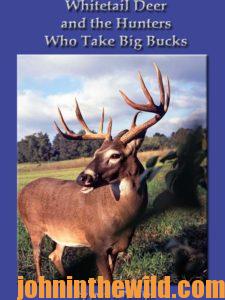
To learn more about hunting deer, check out John E. Phillips’ book, available in Kindle, print and Audible versions, “Whitetail Deer and the Hunters Who Take Big Bucks,” (http://amzn.to/2bYwYOK).
Tomorrow: Realize the Importance of Hunting Transition Areas for Deer

